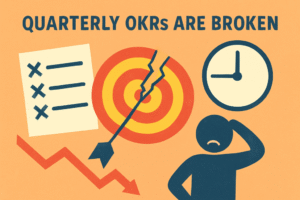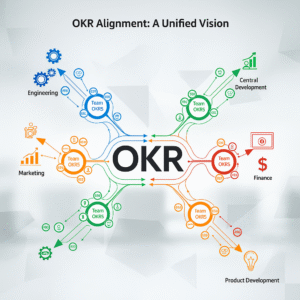With today’s rapidly changing business environment, every organization seeks to improve its business agility. While it is common to start a digital transformation program to achieve this, about 70% of IT / digital transformation projects fail, approximately 45% are late, and 25% get canceled! Let’s discuss possible causes and ways to get them back on track.
Common Causes of Program Failure
Here are five common causes of failure in digital transformation programs. We see these across organizations regardless of size or industry.
- Unclear Objectives: One of the primary culprits behind project derailment is an unclear understanding of project objectives. When teams lack a well-defined goal, they are likely to have poor focus, leading to scope creep, missed deadlines, and frustrated stakeholders.
- Inadequate Planning: Poor project planning can set the stage for failure. Projects without a solid roadmap can often drift off course. It’s essential to outline tasks, timelines, and resource allocation meticulously.
- Problem Solving: Solving the wrong problem or not finding the right solutions within the project can lead to issues down the line. Addressing the incorrect issue or discovering too late that the issue was misconstrued can cause derailment.
- Resource Constraints: Limited resources can hinder project progress. Projects are more likely to experience setbacks without the necessary tools and personnel. This includes changing systems without understanding them.
- Ineffective Communication: Communication breakdowns within project teams can lead to misunderstandings and conflicts. When team members aren’t on the same page, a project is more likely to go off-piste.
A High-Level Approach to Recovery
While these causes of program failure may seem daunting, projects can be rescued and put back on track. Here are five approaches to try.
- Assessment: Identify the root causes of the derailment, evaluate the impact on stakeholders, and understand the scope of the problem.
- Realign Objectives: Once the issues are identified, redefining and clarifying project objectives is crucial. Ensure that all stakeholders are on the same page regarding the project’s goals and expectations.
- Revise the Plan: If the initial plan is inadequate, a robust project plan with a well-defined roadmap, resource allocation, and realistic timelines needs to be created.
- Finding the Correct Solutions: Organizations can adopt design thinking, prototyping, and customer development techniques. These methodologies enable teams to identify the correct problem and craft solutions that are adequate and tailored to meet the actual needs of the project.
- Enhance Communication: Establish clear and transparent communication channels within the project team. Encourage open dialogue, provide regular updates, and address concerns promptly.
Many projects go off the rails, but it’s not the end of the line. With the right approach and determination, projects can be recovered and set back on a course toward success.
Energize your programs with Xodiac’s expert solutions, specializing in rejuvenating faltering programs.
Embark on your program recovery journey with us and benefit from an action plan prioritizing concrete results guided by our seasoned team. Gain valuable insights through thorough program analysis and leverage proven strategies to re-establish program success.




